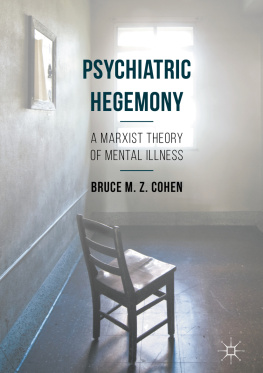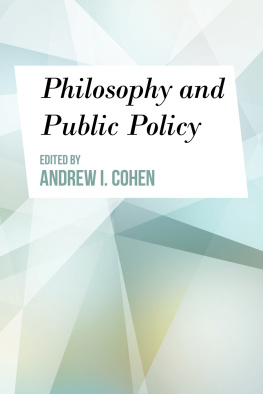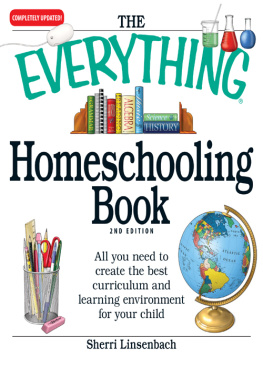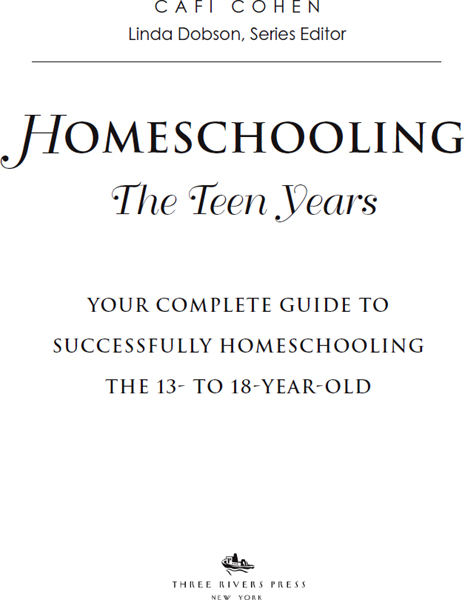Copyright 2000 by Prima Publishing
All rights reserved.
Published in the United States by Three Rivers Press, an imprint of the Crown Publishing Group, a division of Random House, Inc., New York.
www.crownpublishing.com
THREE RIVERS PRESS and the Tugboat design are registered trademarks of Random House, Inc.
Originally published in the United States by Prima Publishing, Roseville, California, a member of the Crown Publishing Group, New York, in 2000.
Library of Congress Cataloging-in-Publication Data
Cohen, Cafi.
Homeschooling, the teen years : your complete guide to successfully homeschooling the 13- to 18-year-old / Cafi Cohen.
p. cm.
1. Home schoolingUnited States. 2. TeenagersEducationUnited States.
I. Title.
LC40.C645 2000
371.042dc21 00-026151
eISBN: 978-0-307-77465-1
v3.1
To my first homeschool mentors,
Cathy Claus and Carol Cynova
CONTENTS
ACKNOWLEDGEMENTS
F OR THIS BOOK , more than one hundred homeschooling families worldwide took time from their busy lives to respond to my long, detailed survey about educating teenagers. Thank you so much. You have joined a grand tradition in which homeschoolers learn not from education professionals, but instead from those with street smartsother experienced parents and teens. Through this book, your ideas and anecdotes inform, teach, and entertain, making homeschooling teenagers seem not only possible but also desirable.
Although I used pseudonyms for the one-hundred-four survey respondents, I used the real names of two homeschool graduates who contributed long essays for the last chapter. Thanks to Breana Mock and Ariel Simmonsand to their mothers Kristen Mock and Cerelle Woods Simmonsfor writing so eloquently and speaking so frankly about the results of homeschooling.
My agent, Ling Lucas, believes in my quest to inform the public about the possibilities offered by homeschooling. I owe her my continuing gratitude for trusting her gut instincts and common sense and taking on unknown quantitiesboth me and the cutting edge subject matter.
Linda Dobson and Prima Publishing both deserve kudos for expanding the inspirational and practical how-to-do-it literature available to would-be home educators. Linda, thank you for putting up with my trivial questions and doubts that I would ever complete this project. Thanks to Prima editors, Jamie Miller, Ruth Younger, and Libby Larson, for the professional review and editing of my work.
For encouraging my writing about homeschooling, I owe debts to Mark and Helen Hegener of Home Education Magazine, Maureen McCaffrey and Craig Young of Homeschooling Today, Patrick Farenga of Growing Without Schooling, and Mary Leppert of The LINK. Home educators of all stripes and colors need to support each other. Together we can.
My homeschool family in Arroyo Grande, California, the parents and students in Shining Light Homeschool Co-op, keep me up-to-date and humble, as do the contributors to the Web-based Kaleidoscapes homeschool bulletin boards. My interaction with these two groups assures that homeschoolers latest day-to-day concerns seldom escape my notice.
My familymy two grown homeschoolers, Jeffrey and Tamara as well as my parents, John and Dolores Fischer, and my second mom, Bernice Cohen, have cheered me on. My husband, Terrell Cohen, patiently reviewed all my first drafts and provided invaluable editorial assistance when the text was least intelligible. I love you all. This volume would not exist without your emotional, practical, and financial support.
Finally, thanks to God, who makes all things possible.
INTRODUCTION: THE HOMESCHOOLING LEARNING JOURNEY
W HEN WE BEGAN homeschooling our twelve-year-old son and eleven-year-old daughter in the 1980s, I located every book written on the subject. There werent manyperhaps fewer than ten. Most focused on homeschooling early- and middle-years children. Those that included information on teens only recounted a few brief anecdotescertainly not enough information to see my teens through grade 12.
The omission did not concern me. After all, we would never try to teach difficult subjects, create teen social outlets, find team sports, negotiate college admissions, and deal with other challenges that confront all parents homeschooling teens. Surely by the time our children reached high school age, they would return to school.
Of course, just the opposite happened. By grade 9, our son and daughter found themselves committed to many community activities and academically ahead of their former classmates. Each year we discussed returning to school, and every year they chose to continue learning at home. Eventually, we homeschooled both children through high school, and they were admitted to their first-choice colleges. Our only regret was not beginning sooner.
At conferences around the nation and world, I have seen the number of families homeschooling teenagers swelling from a trickle to a flood. With todays growing concerns about safety, negative socialization, political correctness, and low academic standards, more and more parents are turning to home education. Technology also fuels growth. Unlike ten years ago, self-instructional computer software, video curricula, and the Internet now make homeschooling teenagers easier than you might think. Increasing cooperation with public and private schools encourages additional families to consider learning at home.
Many new homeschooling parents find statistics convincing. Numerous studies and a mountain of anecdotal evidence point to the academic superiority of home educationeven through high school. Typically, homeschoolers average 20 percent higher on standardized tests than their schooled counterparts. Not surprisingly, every year homeschool graduates win National Merit Scholarships. Many are admitted to selective colleges like Stanford and Harvard, often at higher rates than graduates of public schools. Additional studies show homeschoolers thriving socially. Published accounts reveal that our two childrenheavily involved in community activities like volunteering, youth groups, and sportshad a typical teenage homeschooling experience.
Embarking on home education no longer involves reinventing the wheel before starting your journey. Of course, you will need to think and prepare. The more you research, the more you will learn about the wide spectrum of approaches. At first, some parents are dismayed to learn that there is no One Right Way to educate. Instead, parents who have traveled this road tell us that success comes from learning about options and choosing the best way to homeschool from among unlimited possibilities.
With real-life stories from dozens of families, this volume reveals the rewards as well as the challenges of working with teenagers. We gleaned anecdotes and comments from the answers to 104 lengthy questionnaires from homeschooling parents worldwide and thirty-three shorter surveys from homeschooled teenagers. I located the volunteer survey respondents by posting messages on a wide range of Internet homeschooling bulletin boards and mailing lists.
As you will read in the first chapter, survey-respondent parents run the gamut from high school dropouts to those with multiple graduate degrees, from the working poor to the wealthy. These families homeschool for different reasons and use varied methods and resources. Some are heavily involved in causes within the homeschooling community; others focus primarily on their families. They share two traits: the desire to provide the best education for their children and the willingness to support that goal with their time.












